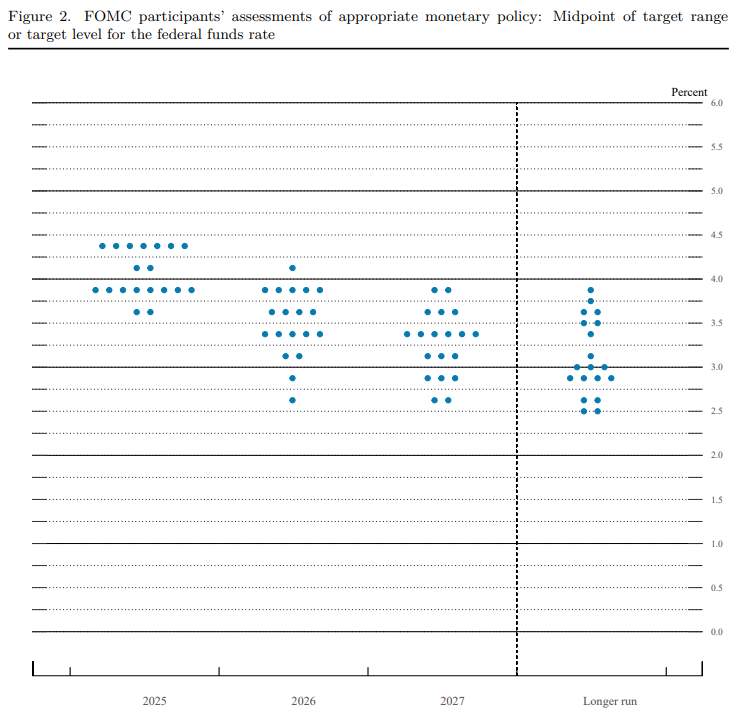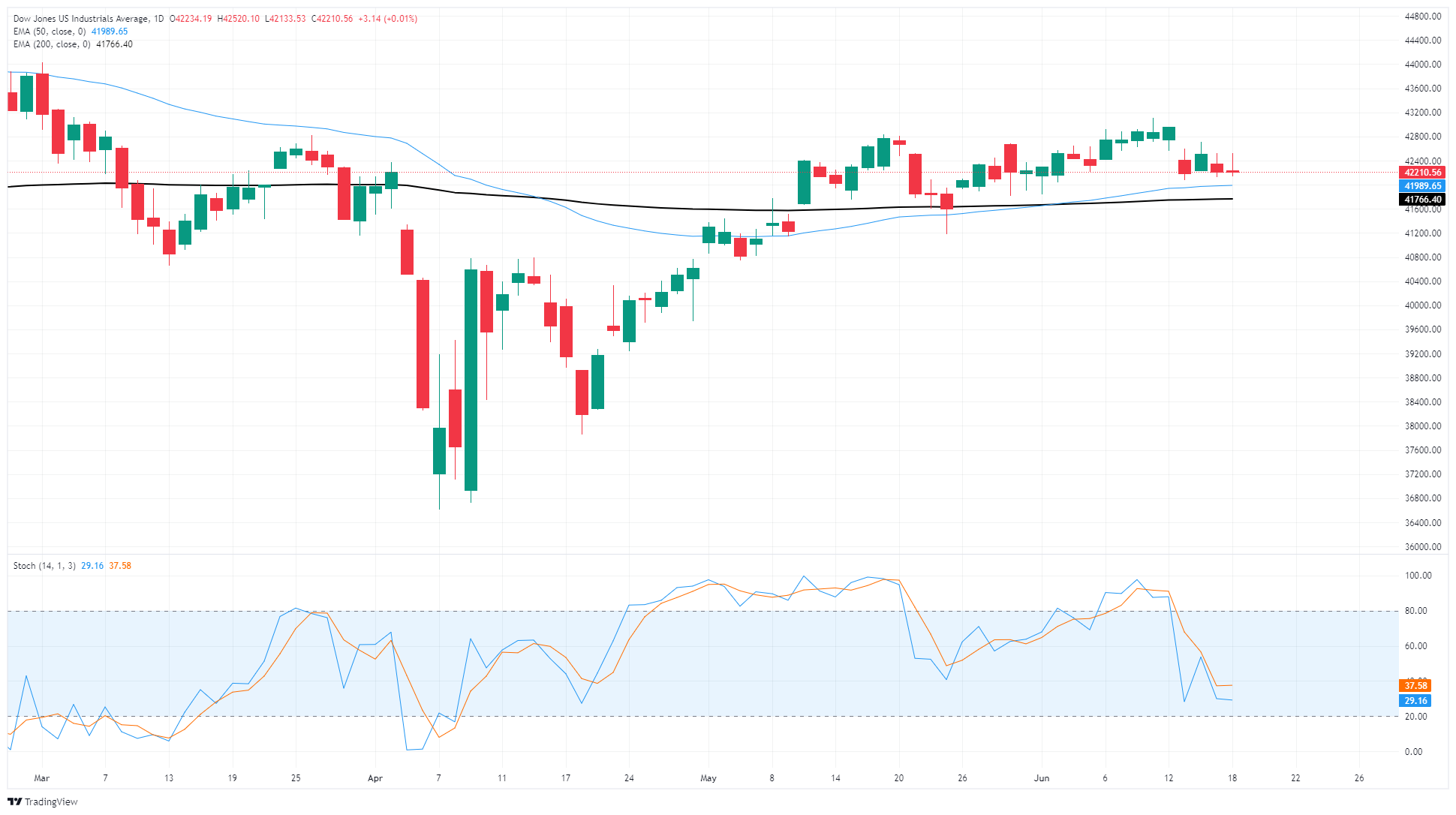Dow Jones Industrial Average holds near flat post-Fed rate hold
- The Dow Jones held flat but with a bearish tinge on Wednesday, trapped in a near-term consolidation zone.
- Equities were largely unaffected by the Fed's latest rate call, which kept rates steady as expected.
- Fed Chair Powell warned that labor and inflation will both need to improve before rate cuts can happen.
The Dow Jones Industrial Average (DJIA) is mostly flat on Wednesday, with equity markets holding steady after the Federal Reserve (Fed) hit the mark and kept interest rates on holds as most investors expected. Traders are still pricing in around 50 basis points in interest rate cuts through the end of 2025, and the Federal Open Market Committee (FOMC) generally seems to agree with that assessment. However, Fed Chair Jerome Powell warned that ongoing policy uncertainty will keep the Fed in a rate-hold stance, and any rate cuts will be contingent on further improvement in labor and inflation data.
Read more: Fed Chair Jerome Powell explained the decision to leave the policy rate unchanged

The Fed still sees an average of 50 basis points in interest rate cuts by the end of the year, following closely with what is priced in according to the CME's FedWatch Tool; however, ongoing trade policy uncertainty has pushed the spread of policymaker rate expectations wider, with some Fed personnel seeing higher year-end rates compared to the previous Summary of Economic Projections (SEP).
According to the CME's FedWatch Tool, rate traders slightly increased their already-standing bets of a first rate cut in September. Odds of a follow-up cut in October also increased, but odds of a delay in a second rate trim until December are still on the cards.
Dow Jones price forecast
The Dow Jones is churning in a tight midrange, trapped in near-term congestion. The major equity index is caught in a consolidation zone just north of the 200-day Exponential Moving Average near 41,800, and price action is pulling into the midrange with technical oscillators hung in no man’s land.
Dow Jones daily chart

Dow Jones FAQs
The Dow Jones Industrial Average, one of the oldest stock market indices in the world, is compiled of the 30 most traded stocks in the US. The index is price-weighted rather than weighted by capitalization. It is calculated by summing the prices of the constituent stocks and dividing them by a factor, currently 0.152. The index was founded by Charles Dow, who also founded the Wall Street Journal. In later years it has been criticized for not being broadly representative enough because it only tracks 30 conglomerates, unlike broader indices such as the S&P 500.
Many different factors drive the Dow Jones Industrial Average (DJIA). The aggregate performance of the component companies revealed in quarterly company earnings reports is the main one. US and global macroeconomic data also contributes as it impacts on investor sentiment. The level of interest rates, set by the Federal Reserve (Fed), also influences the DJIA as it affects the cost of credit, on which many corporations are heavily reliant. Therefore, inflation can be a major driver as well as other metrics which impact the Fed decisions.
Dow Theory is a method for identifying the primary trend of the stock market developed by Charles Dow. A key step is to compare the direction of the Dow Jones Industrial Average (DJIA) and the Dow Jones Transportation Average (DJTA) and only follow trends where both are moving in the same direction. Volume is a confirmatory criteria. The theory uses elements of peak and trough analysis. Dow’s theory posits three trend phases: accumulation, when smart money starts buying or selling; public participation, when the wider public joins in; and distribution, when the smart money exits.
There are a number of ways to trade the DJIA. One is to use ETFs which allow investors to trade the DJIA as a single security, rather than having to buy shares in all 30 constituent companies. A leading example is the SPDR Dow Jones Industrial Average ETF (DIA). DJIA futures contracts enable traders to speculate on the future value of the index and Options provide the right, but not the obligation, to buy or sell the index at a predetermined price in the future. Mutual funds enable investors to buy a share of a diversified portfolio of DJIA stocks thus providing exposure to the overall index.



